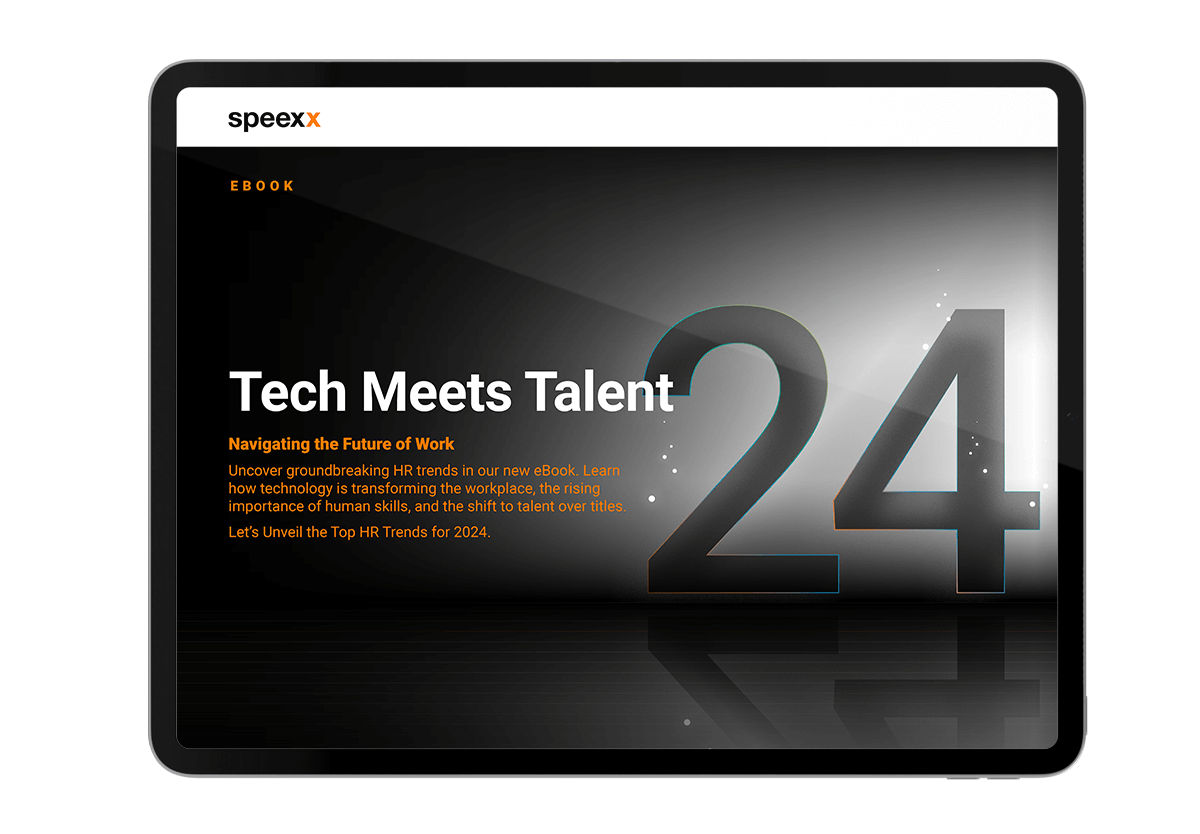What exactly is imposter syndrome, and why is it crucial to pay close attention to it? Imposter syndrome can affect anyone at any stage in their career. Doubting one’s abilities or feeling inadequately qualified are classic signs of imposter syndrome. If left unchecked, this complex can lead to unnecessary personal suffering and negative outcomes for the entire organization.
The concept and term “imposter syndrome” have gained a lot of attention in recent years, particularly among HR and L&D professionals, and with good reason. As the work environment becomes increasingly demanding, employees are expected to keep up with top performance objectives. The stress of always needing to outperform one’s previous achievements, combined with feelings of incompetence, creates a toxic mix that can lead employees to doubt the quality of their work and, ultimately, impacts the company negatively.
HR and L&D professionals should recognize imposter syndrome as a universal, people-centric concept that, when undetected, can have negative repercussions in the workplace.
Understanding Imposter Syndrome
Imposter syndrome refers to the internal experience of doubting one’s competence, despite external evidence of one’s skills. This often happens after a promotion or an achievement – an employee might wonder if they truly are “deserving” of their move up the ladder. People suffering from imposter syndrome question the validity of their position and accomplishments, despite clear proof that they got there on merit. Often, they live in fear that others will “find out” about their lack of certain skills or confidence and expose them as being fake – hence the term “imposter.”
The impact of this phenomenon on the workplace can lead to damaging an employee’s confidence and, therefore, directly affect their output. Imposter syndrome can cause various issues, both mentally (berating oneself, avoiding growth opportunities like public speaking), and even physically (stress, anxiety manifesting itself in clenched jaws, bad posture and general lack of self-care). For more details on the impact of imposter syndrome, you can refer to this article from the American Psychological Association.
The Five Types of Imposter Syndrome
According to Dr. Valerie Young, a renowned expert on impostor syndrome and co-founder of the Impostor Syndrome Institute, there are five fundamental types of imposter syndrome. The five different types of impostor syndrome Dr. Young has identified are the following:
- The Perfectionist: Individuals with this type of impostor syndrome believe that unless they achieve absolute perfection, they could have done better. Their perfectionistic tendencies lead them to doubt their abilities and feel like impostors.
- The Expert: Those experiencing this type of impostor syndrome feel like frauds because they are aware that they do not possess all the knowledge or skills in a particular field. They feel inadequate because they have not mastered every aspect of a subject.
- The Natural Genius: People with this impostor syndrome type doubt their intelligence and competence, feeling like impostors if they do not excel immediately or if it takes them longer to learn a new skill.
- The Soloist: Feeling like an impostor can also stem from needing assistance to achieve a certain level of success. Those who had to ask for help may question their own abilities and feel like frauds.
- The Superperson: This type of impostor syndrome involves believing that one must always be the hardest worker and achieve the highest levels of success. Failing to meet these standards can lead to feelings of being a fraud.

The 2024 edition of our Trends eBook series is a must-read.
The Presence of Imposter Syndrome in the Workplace
It is important to first determine how aware your workplace is of imposter syndrome. According to insights from a LeadMD survey, about three out of four people claim to be unaware of what imposter syndrome is. As surprising as these results are, they underscore the need for HR and L&D leaders to further educate employees on this issue and provide them with the appropriate tools to identify and prevent feelings of being a phony.
Although this topic has gained prominence among HR and L&D professionals in recent years, many people still lack awareness and can benefit from learning more about identifying imposter syndrome—in themselves and others. The significance employees place on their contributions, along with the differing values and metrics by which they measure their individual successes, ultimately determines their vulnerability to imposter syndrome.
Telltale Symptoms of Imposter Syndrome
To prevent imposter syndrome from affecting your workplace, it’s important to identify its key characteristics to determine if someone is suffering from it. No organization is immune to the effects of imposter syndrome; familiarizing oneself with a few main indicators helps increase overall awareness around the topic, thus enabling you to offer support to those who may need it. If HR and L&D managers observe any of the following attributes (as identified by Training Journal) in employees, they should flag them as potential indicators of imposter syndrome, and actively address any resulting unease or general discomfort. As previously mentioned, there are some typical traits that people suffering from imposter syndrome manifest, the most common being:
- Workaholism: Difficulty disconnecting at the end of the workday and frequent overtime, often signaling overcompensation or anxiety about job security.
- Overt Independence: A preference for working independently, coupled with challenges in teamwork.
- Perfectionism: A relentless pursuit of perfection, accompanied by self-criticism when perfection is not achieved.
- Expertism: An insatiable quest for knowledge and facts, combined with a persistent feeling of inadequacy and hesitation in decision-making without additional information.
How HR and L&D Can Support Employees Dealing with Imposter Syndrome
So, it is important to understand what can be done to address this issue within the workplace, and how we can ensure that employees believe in the legitimacy of their successes. Maintaining open discussions and implementing complementary training processes are crucial steps in alleviating stigma around the topic. HR and L&D professionals can take several actions to combat imposter syndrome effectively. These include educating employees about imposter syndrome, fostering recognition of the signs among colleagues, and enhancing mutual support—all simple yet effective strategies.
In case you are looking for a new exciting podcast series, be sure to check out the Speexx Exchange Podcast with Donald Taylor, the top resource for HR and L&D leaders interested in latest developments in learning in training.
Setting Up Training on How to Deal with Imposter Syndrome
Implementing specific training on how to address this issue, including cultivating a different mindset around the topic, helps move an organization in the right direction. Understanding what internally motivates employees and the importance they place on their successes is critical for establishing effective practices to combat negative thoughts.
Putting the Right Tools in Place to Combat Imposter Syndrome
It is crucial for managers to have the right tools to encourage employees to open up and share their work-related doubts. Maintaining a safe space for sensitive discussions will encourage employees to share and unburden themselves, thereby enabling them to receive the emotional support they might need.
Some Tools that May be Helpful:
Seismic: A platform that allows people to take ‘lessons’ in their spare time. It enables individuals to learn independently and enhance their skills at their own pace, potentially boosting confidence.
Engagedly: A site that facilitates agreement on objectives, tracks progress, and helps align company and team goals.
Unmind: A platform dedicated to improving the mental health of employees by proactively measuring, understanding, and enhancing their wellbeing.
Communication is Key
Discussing highly personal and sensitive topics, such as imposter syndrome, requires a delicate approach. It’s not a one-time event; there should be a steady cadence of check-ins. The longer people go without checking in and sharing feedback to one another, the more likely they are to be totally off-base on how they are performing—something we want to avoid as HR and L&D managers. When communicating about sensitive topics such as imposter syndrome, consider these strategies to optimize the interaction:
- Start with empathy: Acknowledge the personal nature of imposter syndrome. Show understanding and compassion for the feelings involved.
- Create a safe space: Make sure the conversation occurs in a private, comfortable setting where the individual feels safe to open up without fear of judgment.
- Listen actively: Prioritize listening over speaking. Give the other person the space to express their thoughts and feelings without interruption.
- Use affirming language: Highlight the individual’s strengths and achievements. Use language that affirms their value and contributions.
- Be patient: Allow the person to process their feelings at their own pace. Avoid rushing the conversation or pressing for quick resolutions.
- Offer resources: Provide information on professional help or support groups if the individual seems open to it. Knowing there are resources can be comforting.
- Follow up: Check in after the initial conversation to show continued support and to address any new concerns that may have arisen.
These approaches can help make the conversation more effective and supportive, fostering a better understanding and alleviating some of the discomfort associated with discussing imposter syndrome.

Provide Emotional Support
Imposter syndrome has not only a physical impact but also mental repercussions that may not always be obvious. The health and the well-being of employees should be a top priority. If an employee’s mental health is suffering due to the doubts they may be having, their productivity and the quality of their output is also likely to be affected. They might not speak as confidently in a client meeting or be as pleasant and affable when dealing with colleagues. Being distracted can also lead to errors and slip-ups. Support in this time is a critical element in driving an employee’s thoughts into a healthier direction – not only momentarily but also in the long term.
Introduce Programs and Workshops
This is where it might be worth considering some internal initiatives like setting up mentorship programs or career coaching for your employees. If you find that an employee is uncertain about his or her public speaking skills in a new role he or she assumed, which demands lots of speeches and talks, then perhaps you’d recommend they have (virtual or in-person) coffee dates with another, more senior colleague who often delivers talks in front of crowds.
Similarly, some employees may enjoy workshops on building confidence, or learning other skills, from time to time. To be able to casually learn and exchange insights, best practices and lessons learned with other colleagues – in a way that isn’t directly related to day-to-day work – is a good way for colleagues to practice and flex new skills in a low-stakes, safe way, and also build relationships among one another that makes them comfortable with seeking out opinions among themselves.
In other words, they might become friends and be better suited to have each other’s backs or boost each other’s morale!
Reward Successes
Having a clear reward system set in place to recognize the successes of employees can also be beneficial when it comes to preventing feelings of incompetence. Establishing such a system eliminates the possibility that they may feel doubtful of the things they have achieved. This could be something more programmatic, like a bonus system, or something fun and light.
One example many companies employ is ‘company awards,’ where—every quarter or so—at an all-hands meeting, ‘awards’ (whether it’s just a desk plaque, verbal recognition, bragging rights, or a bottle of wine) are given for achievements such as measurable successes (e.g., the employee who closed the most deals on a team) or for someone who demonstrated remarkable team leadership or positivity in a difficult work situation.
Acknowledge Employee Achievements
Similar to the above: giving credit where credit is due can keep employees motivated and maintain their levels of confidence. Openly acknowledging an employee’s achievements – not just monetarily, but also commending them in front of the whole organization (at a meeting, or over the company intranet) can also be the positive reinforcement one needs to stay confident and even start performing at a higher level.
Conclusion: Going Beyond Imposter Syndrome
Don’t let imposter syndrome undermine the confidence of your employees, colleagues, or yourself. Although this phenomenon is more widespread in the workplace than we perhaps realize, commonality should not imply acceptance. Instead, adopt proactive techniques to effectively counteract its effects.
The ultimate aim is to guide everyone towards a healthier, happier work life and improved mental well-being. By thoughtfully choosing methods to tackle this issue, maintaining open and respectful communication, and ensuring regular interactions, you create a supportive work environment. Here, employees are not only more conscious of each other’s feelings but are also encouraged to support one another and feel secure in seeking help when necessary.

